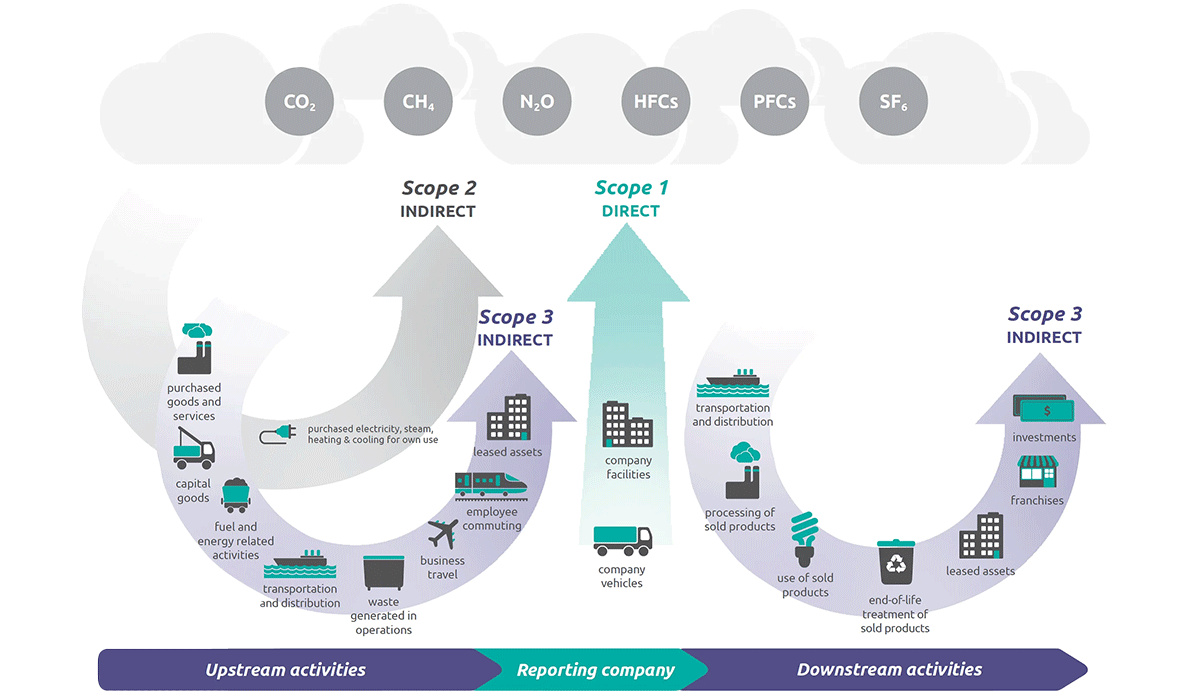Responsibility
Scope 1, 2 og 3
We must take care of nature and its resources. It is a crucial issue for HJHansen Recycling Group, and therefore we wish to set targets for our climate impact.
To set our climate strategy, we need to know our baseline. Where and how much CO2 do we emit? In a world like today, it is not enough to look at our own emissions isolated. We need to widen our horizon to see our indirect emissions as well– where we receive our electricity from, the value chain of our scrap, etc.
The formula for this is found in The Corporate Green House Gas Protocol Standard, or the GHG Protocol, which describes how to calculate an organization’s emissions by dividing them into three scopes. Read more about scopes 1, 2, and 3 at the bottom of the page.
Database and optimization
We are collaborating with the consulting engineering company EnergySolution to prepare a climate report for our financial year 2020/2021 based on scopes 1, 2, and 3. With the report, we can start creating a climate strategy based on data, results, and, not least, the information we can interpret from it. A solid decision-making basis is essential to take possible risks, future legislation, and taxes into account in the strategy, as well as be realistic about where we can make the most significant difference. And that is why data and data quality are our central focal points.
We know there is optimization potential. Therefore, we have already started one initiative. Siemens Energy is preparing a report with concrete possibilities to optimize our energy output in our production and head office at Havnegade 110 in Odense.
The climate data is, therefore, our tool for working with climate efforts in the coming years.
Ever-widening circles
At the same time, with this mapping of scopes 1, 2, and 3, we hope to help create more transparency in our industry and put pressure upstream and downstream in the value chain to 1) start mapping, 2) set climate targets, and 3) make climate-optimizing measures. We all have a great responsibility if the following targets are to be achieved:
The Paris Agreement with a reduction in greenhouse gas emissions of 40% by 2030
Denmark’s climate target to reduce annual greenhouse gases by 70% by 2030
And more locally, Odense Municipality to be climate neutral in 2030.

Picture of Scope 1, 2, 3 from GHGprotocol.org
What is scope 1, 2, and 3?
In the GHG protocol (Green House Gas Protocol), scopes 1, 2, and 3 are described as follows:
Scope 1, direct emissions: All direct emissions from sources owned or controlled by the company itself. These are emissions that occur through the combustion of fossil fuels (diesel, petrol, or natural gas) from, e.g., the company’s energy production, on-site heating, and cooling consumption, processes, company cars, and other machinery.
Scope 2, indirect emissions: Includes emissions that originate from the consumption of collectively supplied energy – district heating, electricity, etc., purchased and used by the company.
Scope 3, other indirect emissions: Are all other indirect emissions from the company’s activities that arise from sources that the company itself does not own or can control. This includes emissions related to the entire value chain – both “upstream”, including emissions related to the supplier chain, and “downstream”, including emissions connected to the use and disposal of products.
Contact us - E-mail or call
With our extensive know-how, HJHansen can advise you and your company on the best solutions. Contact us and we will give you a tailored offer through a close dialogue.